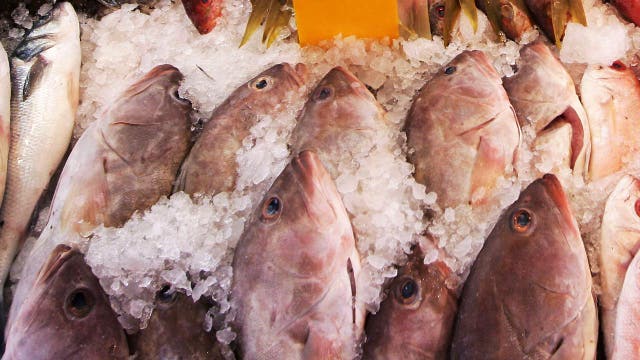Are you the victim of seafood fraud?
Substitution scams continue to plague the industry and could cause health complications
Seafood fraud is still a problem in the U.S., despite a 2018 government program attempting to curb the practice, a new study has found.
The report, published Thursday by advocacy group Oceana, found that 21 percent of fish tested not under the Seafood Import Monitoring Program are mislabeled in grocery stores and restaurants.
The organization tested 449 fish from more than 250 grocery stores, markets and restaurants in 24 states and Washington, D.C. between March and August 2018.
SHARK SHOCKER: ENDANGERED SPECIES SOLD IN UK FISH AND CHIP SHOPS
They analyzed fish that were not included in the government’s traceability program, which only covers 13 species of fish, though even those fish are only tracked from the boat to the U.S. border.
According to the investigation, sea bass was the most likely fish to be mislabeled — at 55 percent — and snapper was the second most likely — at 42 percent.
The establishments most likely to mislabel seafood were restaurants — at 26 percent — followed by smaller markets — at 24 percent. Chain grocery stores only sold mislabeled fish at about 12 percent, the study found. Overall, one in three businesses were found to sell mislabeled seafood.
US IMPORTED MORE SEAFOOD IN 2017 THAN ANY PRIOR YEAR
The organization found establishments mislead people into buying vulnerable species when they thought they were buying sustainable fish or they misrepresented lower-quality species under generic terms such as sea bass or catfish.
Some examples of mislabeled seafood found in the investigation included: giant freshwater prawn being sold as slipper lobster, Greenland turbot being sold as Alaskan halibut and sutchi catfish or spinycheek grouper being sold as hogfish, according to Oceana.
Beth Lowell, Oceana’s deputy vice president of U.S. campaigns, urged the government to do more to stop fraud.
“Seafood fraud ultimately deceives consumers who fall victim to a bait and switch, disguises conservation and health risks, and hurts honest fishermen and seafood businesses,” she said in a statement.
“Seafood traceability — from boat to plate — is critical to ensure that all seafood sold in the U.S. is safe, legally caught and honestly labeled,” Lowell added.
In 2013, Oceana published an investigation that found 33 percent of fish in the U.S. were mislabeled after analyzing 1,215 seafood samples from 674 retail outlets in 21 states from 2010 to 2012.


